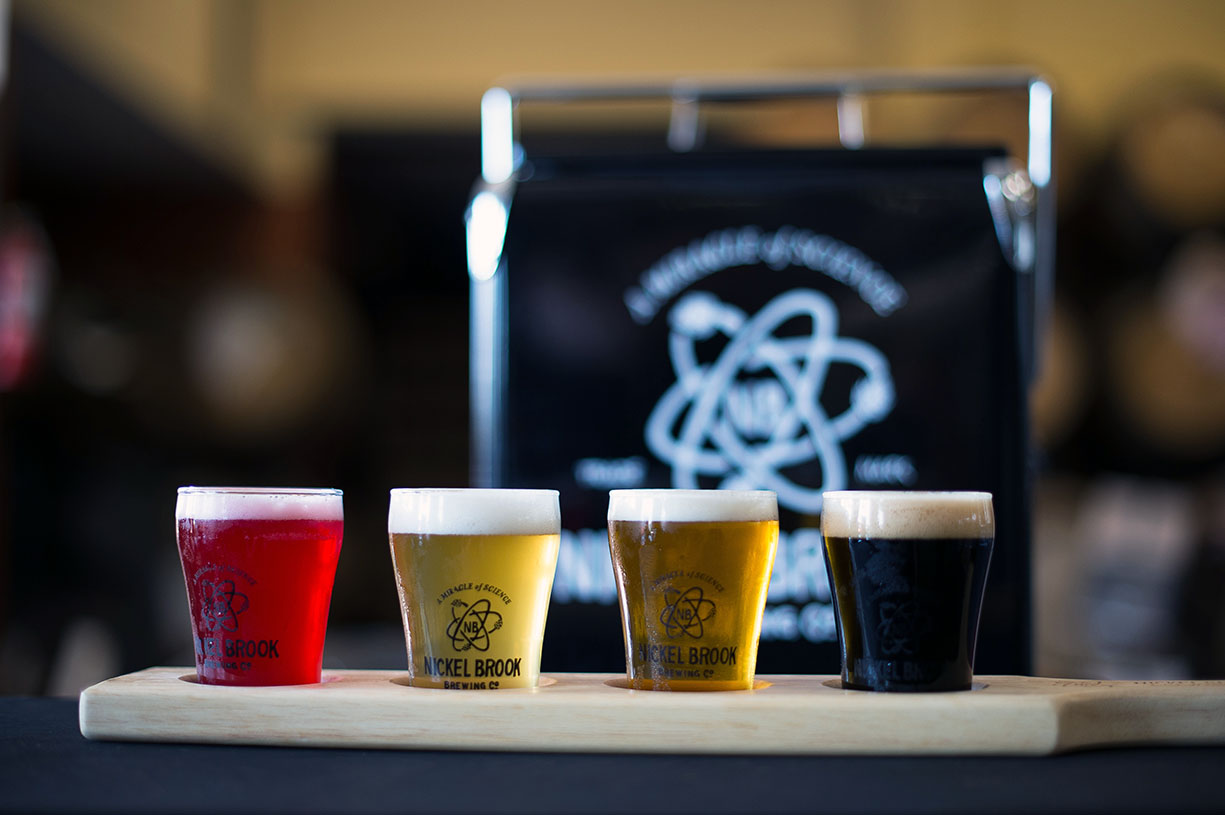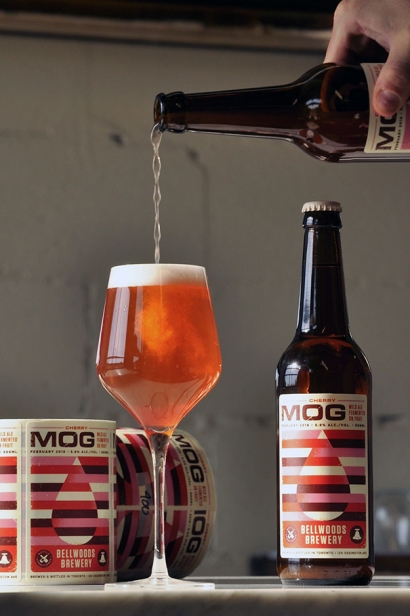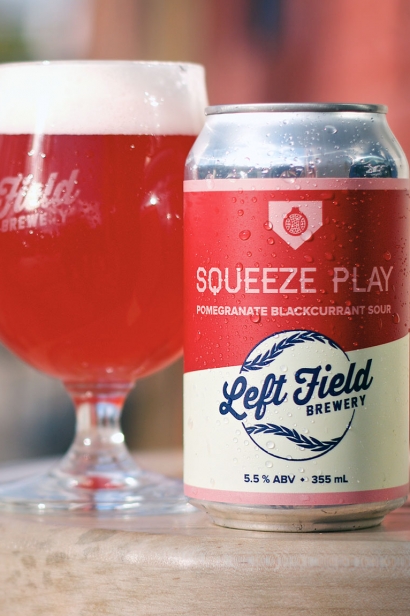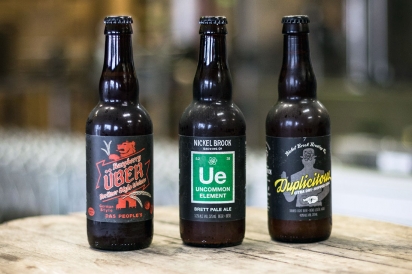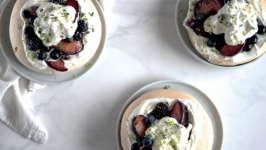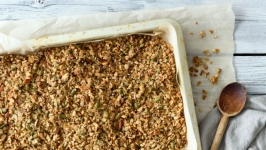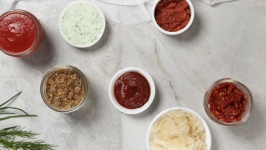Getting Funky
It’s not every day you meet someone with the job title of “Funk Master.” But for Patrick Howell, who heads up Nickel Brook Brewing Co.’s sour beer production facility known as the “Funk Lab” in Burlington, Ont., the role is something he takes very seriously.
“The team that we have built at the Funk Lab is small, creative and extremely capable,” says Howell, who is a graduate of the prestigious masters of science, brewing and distilling course at Heriot-Watt University in Scotland.
Howell and his tightly knit troupe of brewers have “experimented, failed and achieved together over the lifespan of the facility.”
“I’m very proud of my team and what we have accomplished over the last couple of years,” he says. On average, the Funk Lab can brew upwards of 40,000 litres of sour beer per month during the summer season.
Founded in 2005, Nickel Brook has been one of the leading players in the Ontario craft beer movement. Producing an array of seasonal and specialty beers, the brewery follows the simple motto: “beer, down to a science.”
In 2016, the company transformed its original brewery into a facility dedicated exclusively to small-batch sour beers. The largest of its kind in Canada, the Funk Lab is home to a massive barreling program where beers are aged in 400 different varieties of whisky and wine barrels for added depth and complexity. Nickel Brook’s Raspberry Uber, a Berliner-style Weisse beer that uses half a pound of raspberries for every litre of beer, is the most popular creation to come out of the lab so far.
Sour beers have been gaining popularity in recent years — they’re omnipresent on restaurant and bar menus nowadays — but they’re no newcomer to the beer scene.
“It’s important to know that there is nothing new about the idea of a sour beer,” says Luke Pestl, co-founder of Toronto’s Bellwoods Brewery.
Prior to modern refrigeration and key advances in microbial science, most beer would have been influenced to varying degrees by acid-producing bacteria, which ultimately creates what we now call sour beer. “With the rise in craft beer and small-batch production,” Pestl says, “people are again learning to appreciate this diverse family of beers.”
What exactly makes a sour beer unique? The style we enjoy today was perfected in Belgium in the 19th century. It uses naturally occurring bacteria and yeasts including Lactobacillus, Pediococcus, and Brettanomyces (known as “Brett”) that happen to be floating around the brewery or living in the brewing equipment. Today, some of the oldest Belgian breweries are famous for not removing dust or even cobwebs from the brewing area for fear of disturbing natural colonies or micro-organisms that impart sought-after flavour profiles.
These yeasts and bacteria are the secret to sour beer. They contribute a hint of tartness, akin to sauerkraut or yogurt, as well as characteristic funky flavours and aromas, sometimes compared to musty leather, horse blanket and even wet dog. Naturally acidic fruit — think cherries, peaches and berries — can add another layer of interesting sour tang to the mix.
When you purchase a sour beer today, you’re typically buying a kettle sour or a traditional sour or wild ale.
Kettle sours are inexpensive, quick and relatively easy to make and are responsible for the impressive growth in the sour-beer industry. As the name implies, souring occurs not in a barrel but in a kettle and the yeast or bacteria is introduced.
On the other hand, a traditional sour or wild ale is produced through a process called “mixed fermentation,” which uses a combination of conventional and wild yeasts.
This style of beer, which has a long and rich history, takes months or years to complete and can be unpredictable. It offers an incredibly nuanced and complex profile beyond the scope of many kettle sours and is accordingly sold at a higher price.
“While sour beer is a new idea to many people, acidity is just another age-old tool that can be used by brewers to create interesting and delicious beers, in a similar way that a chef might include acidity in a recipe through the use of citrus,” says Pestl, whose team is famous for creating sour ale favourites such as Jelly King, which has juicy, refreshing hints of fuzzy peach and tangerine.
“More than anything, I think sour beers are becoming increasingly popular because they are often extremely accessible,” he says.
Justin Spencer, beer sommelier and brewery employee at Left Field Brewery in Toronto, says sour beer is a great entry point for trying craft beer, especially for people who like cider and wine.
In 2015, Left Field Brewery made its first kettle sour brewed with hibiscus. Since then, the team has continued to experiment and now offers Bang-Bang, a dry-hopped sour, in addition to the Squeeze Play series of fruited kettle sours in its regular lineup.
“Sours provide a unique experience in the sense that they aren’t overloaded with hops or extreme bitterness — some of the things that can make people cautious about trying craft beer,” he says.
“They’re quenching and provide an array of appealing options for adding different fruits or hops, which helps keep things exciting and new with each new release.”
Sometimes brewers look for a face-puckering, citric and deep acetic sour (similar to vinegar) and sometimes, they just let the bacteria and yeast dictate how the final product will taste.
“We accomplish [this] by creating an environment that allows the yeast or bacteria to thrive and develop its flavour,” Howell says. “Once it has hit that ideal character we are looking for, we either kill off the organism or we introduce another strain, which is meant to outcompete it for food and cut off its flavour development.”
Safe to say, brewing sour beer does come with its challenges. Working with living, evolving and highly unpredictable wild yeasts can easily produce “off” flavours (undesirable tastes), lead to over-carbonation and contaminate clean yeast strains.
Hardships aside, Howell says he’s constantly amazed by the depth of character in sour beers, even if certain flavours are unplanned.
“The excitement that I feel when I drink an eloquently layered and well-thought-out surprise is second to none,” he explains.
Because sour beers come in so many styles with varying degrees of tartness and fruitiness, they are incredibly food friendly. The acidity, complexity and salty character of some sours is a natural companion to cheese. Powerful sour beers can complement equally robust dishes, such as barbecue and grilled, fatty meats.
More delicate sours with citrus notes can be a natural match for ceviche and other seafood, salads and spicy foods.
When asked about his ultimate sour beer and food pairing, Howell is quick to answer. “My grandmother’s sweet and sour spareribs with a Raspberry Uber… but it has to be eaten on a shaded patio on a sunny day."
Nickel Brook Brewing Co.
864 Drury Lane, Burlington, Ont.
nickelbrook.com | 905.681.2739
Bellwoods Brewery
124 Ossington Ave., Toronto, Ont.
bellwoodsbrewery.com | 416.535.4586
Left Field Brewery
36 Wagstaff Dr., Toronto, Ont.
leftfieldbrewery.ca | 647.346.5001


